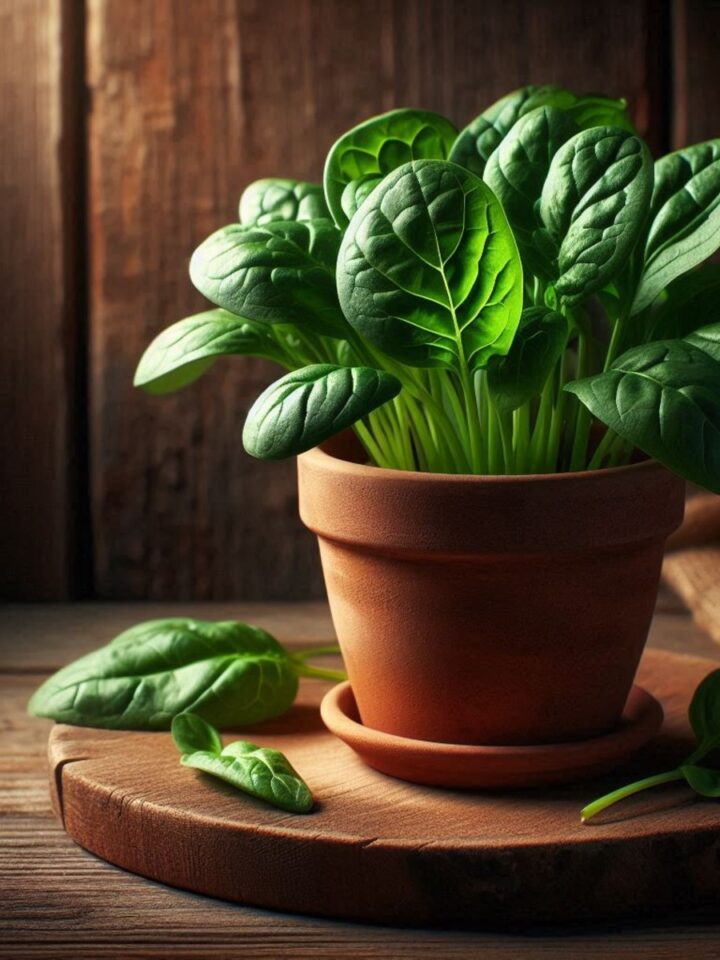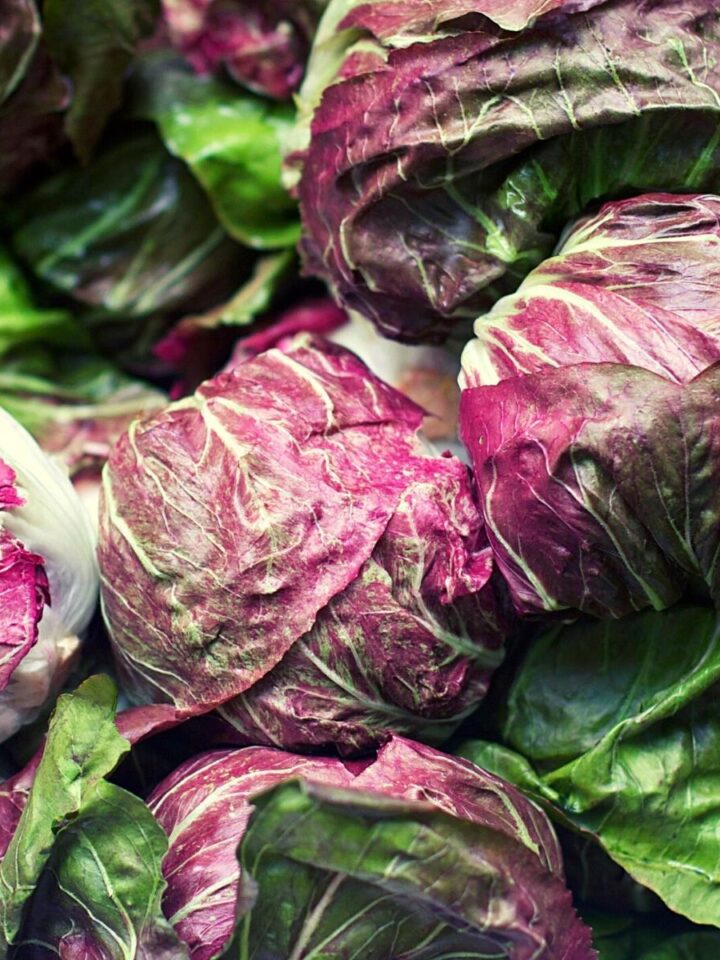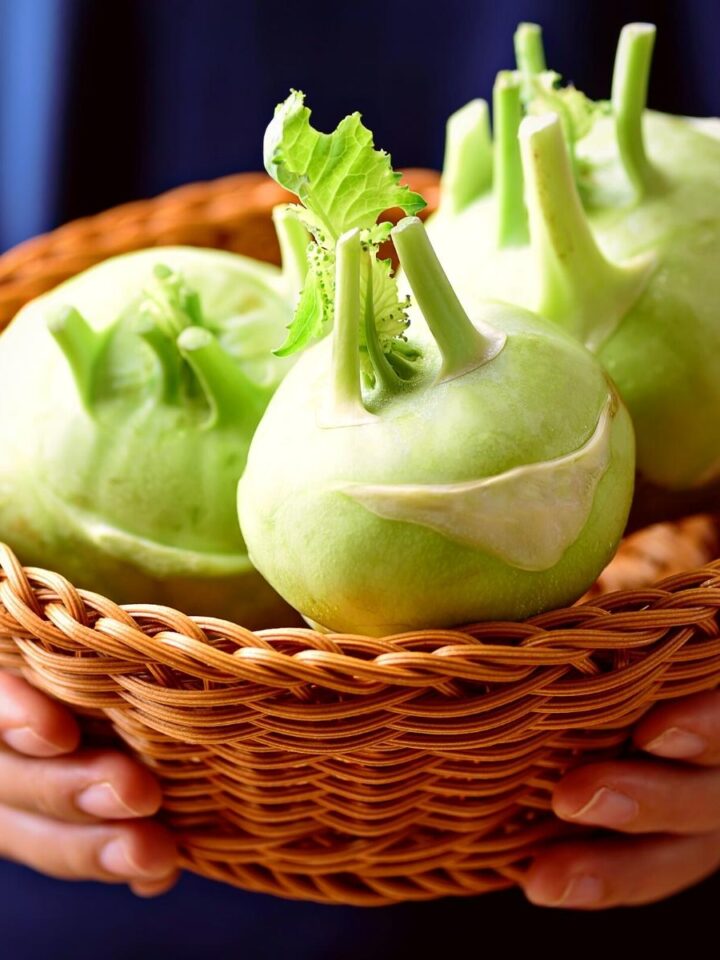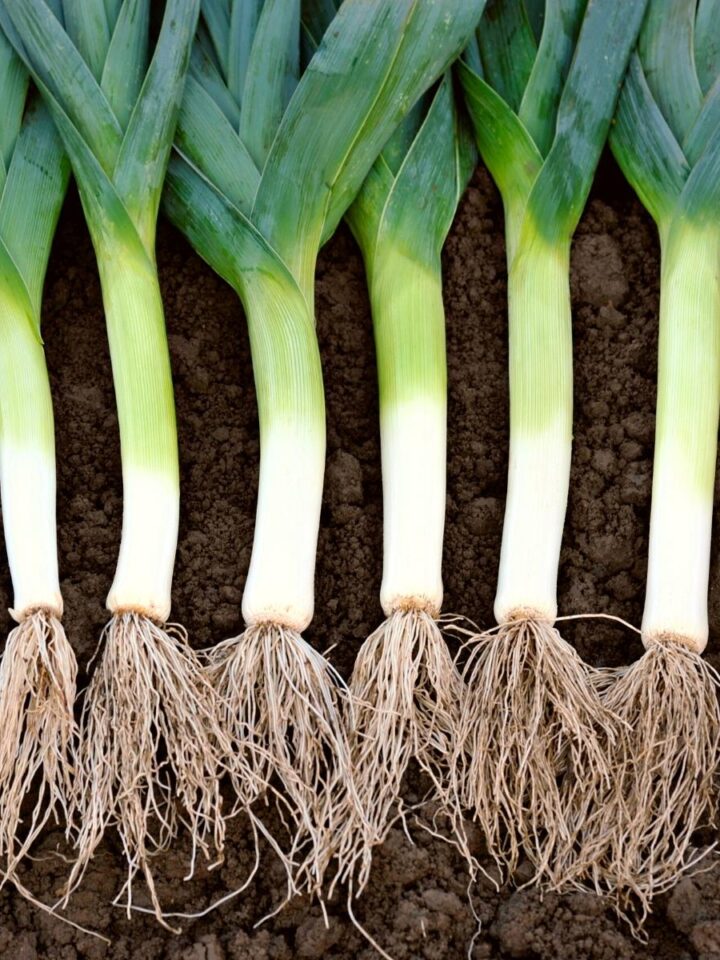This post contains affiliate links, which means I will make a commission at no extra cost to you should you click through and make a purchase. As an Amazon Associate I earn from qualifying purchases.
Growing a pumpkin that can win the prize at your local fair is no easy task. It takes time, patience, and some hard work. But if you follow these gardening tips for pumpkin that really work, you will have plenty of pumpkins in the patch by fall!
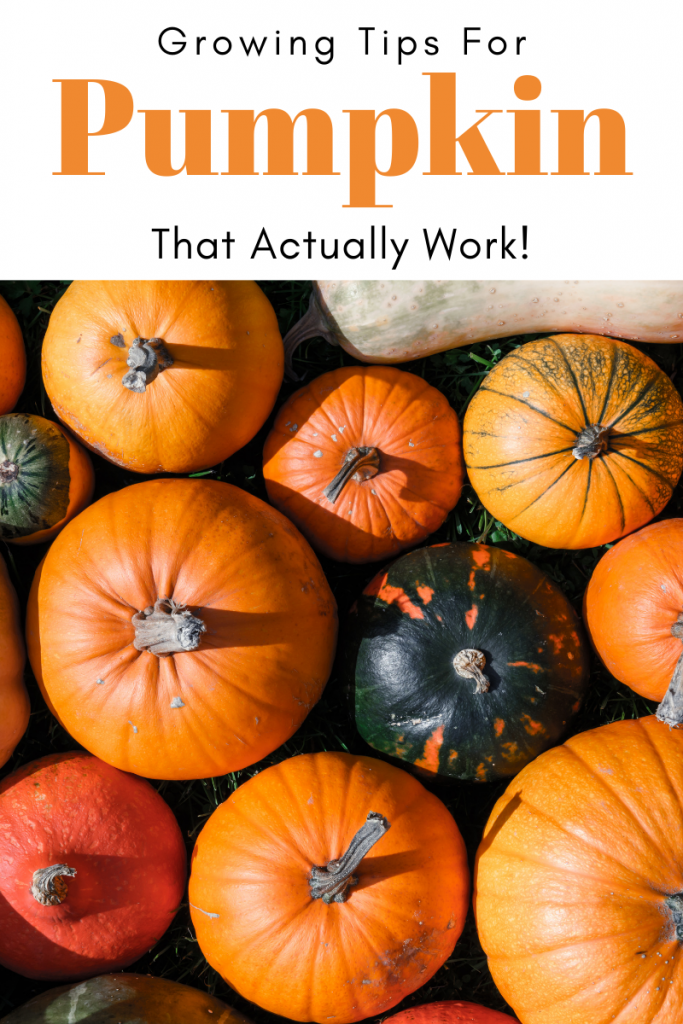
In the world of international cooking, pumpkin has a got a bad reputation. It is one of those vegetables that not too many people like, especially children. It is surprising because pumpkin is one of the most versatile vegetables (although it is a fruit) that quickly takes on the flavors added to the dish. The pumpkin is easily recognizable due to its hard rind that is carved into grooves.
I think pumpkin is sweet, creamy and delicious. Try it in this easy carrot and pumpkin soup recipe.
Pumpkin is widely available in various colors such as yellow, orange, white, and even red and green. In the US, pumpkins are used on Thanksgiving Day to make the traditional pumpkin pie, and we all know how popular pumpkin is among the children during Halloween. If you are a cook, you would prefer the smaller and sweeter variety than the larger ones used during Halloween.
Gardening Tips for Pumpkin that Actually Work
Many people wonder what a pumpkin tastes like. Well, it has a mild taste and adapts well to the recipe in which it is used. The taste is close to a sweet potato but more like an extra sweet squash.
Pumpkin is considered an excellent ingredient for chili dishes as it does not overpower the other flavors of the meal. Pumpkin is also used to make soup, bread, desserts, and many other recipes.

History of pumpkins
I know, you probably think of it as a Halloween decoration. But pumpkins are actually native to North America and were cultivated by Native Americans over 3000 years ago.
In fact, the seeds have been found in Mexico as far back as 5500 BC. The Native Americans used pumpkins as the primary source of all their food, and it formed the foundation of the majority of their recipes.
When the European pilgrims came, they liked what they saw and took seeds back to Europe. Christopher Columbus was the 1st European to bring the pumpkin seeds from the heart of the US to Europe. The popularity of the food spread far and across, and soon it became one of the most sought-after ingredients even in Europe.
Pumpkin is now the symbol of harvest time in many countries including Mexico where they use pumpkin to make traditional dishes such as stewed pumpkin with chili or traditional Mexican desserts called pepitas de calabaza which translates to "pumpkin seeds".
If you want your children's school projects decorated for fall then consider using some orange paint on small paper pumpkins cut-outs for this purpose! You will be surprised how much a simple change can do when decorating their classroom walls at home during these few weeks before Thanksgiving Day arrives.
Benefits of Pumpkins
Pumpkin is considered a superfood as it has loads of health benefits. It is a powerhouse of Vitamin A that helps to fight inflammation in the body. The fiber content in the veggie aids in the digestive health of the body.
Pumpkin also has Vitamin E that can boost the immune system to protect the body against various diseases. The body receives a good number of antioxidants that help individuals to get rid of free radicals. That is because pumpkins are packed with beta-carotene, which is considered to be a powerful antioxidant. This nutrient neutralizes the free radicals in our body that can cause cell and tissue damage due to oxidation.
If you want some pumpkin for your recipes then consider going out and buying one or two small pumpkins such as sugar pie pumpkin variety instead of these large ones called "jack-o'-lanterns" since they have more flesh inside them!
Basic Pumpkin Facts
Whether you sow the seeds indoors or outside, pumpkin seeds germinate within ten days. However, if you do not find any sign of growth after ten days, you should consider second planting.
Pumpkin can be grown between January and March and from September to December. Sowing can also begin after the first showers in May and June.
Pumpkin seeds can be directly sown in the garden three weeks after the last frost date. The soil temperature can hover around 65 degrees F, and the air temperatures stay must above 55 degrees F at night. The optimal soil temperature for growing pumpkins is around 70 degrees F.
The regular varieties will yield a maximum of four pumpkins per plant, while the miniature types will produce up to a dozen pumpkins.
As soon as you peel off the skin, you will get the goodness of pumpkins. The flesh of the larger pumpkins is perfect for soups and curries, and that of the petite pumpkins are used for bread, pies, and cakes.
Pumpkins are usually roasted to be eaten and there is a good deal of sugar content. The taste may not appeal well if you prefer savory flavors, but it can complement the sweetness in desserts like pumpkin pie or apple pies when added as an ingredient for extra texture. You need to use some butter because using cream will make your dessert too fatty so add that instead!
What about seeds from pumpkins?
The pumpkin seed should only be used after they have been cooked since raw ones contain high levels of acrylamide which can cause cancer according to research studies. This toxin also accumulates in other parts of our body such as our brains where it damages cells and leads them into degeneration over time unless we take necessary precautions.
What about pumpkin leaves?
Pumpkin leaves can be used as a natural food coloring for your desserts. They turn green when cooked and have a similar taste to spinach!
Gardening Tips for Pumpkin: Soil
Pumpkins prefer soil that is almost neutral or slightly acidic. If the area has a chance of frost in late April or early May, you should sow the pumpkin seeds indoors at least two weeks before planting. The pumpkins require enough organic matter and a balanced fertilizer. Basically, Pumpkin plants need well drained, fertile soil that's rich with nitrogen for healthy growth.
Gardening Tips for Pumpkin: Planting
The key to having pumpkins free from disease (particularly blight) is planting them correctly so that they have plenty of room as they grow bigger!
One can sow the pumpkin seeds directly into the ground. One needs to select a day after the last frost and always choose a spot to get the full sun. If you plan to grow the pumpkins as a food crop, you should start the process indoors as many as three weeks before the last frost date in the region.
Plant the pumpkin seeds when the soil is about 70 degrees F and it has stopped raining. This will give you a better chance of success in your garden.
Plant the seed about two inches deep and one to three feet apart depending on how large you want it to grow. Water very occasionally if at all during this period since they are sensitive plants that need constant moisture such as when pollinating time comes around.
They can also be grown in pots which is recommended for indoors or outdoors where there's no room for them! Just make sure the pot has good drainage because pumpkin plant roots don't like sitting water inside of their cells for extended periods of time.
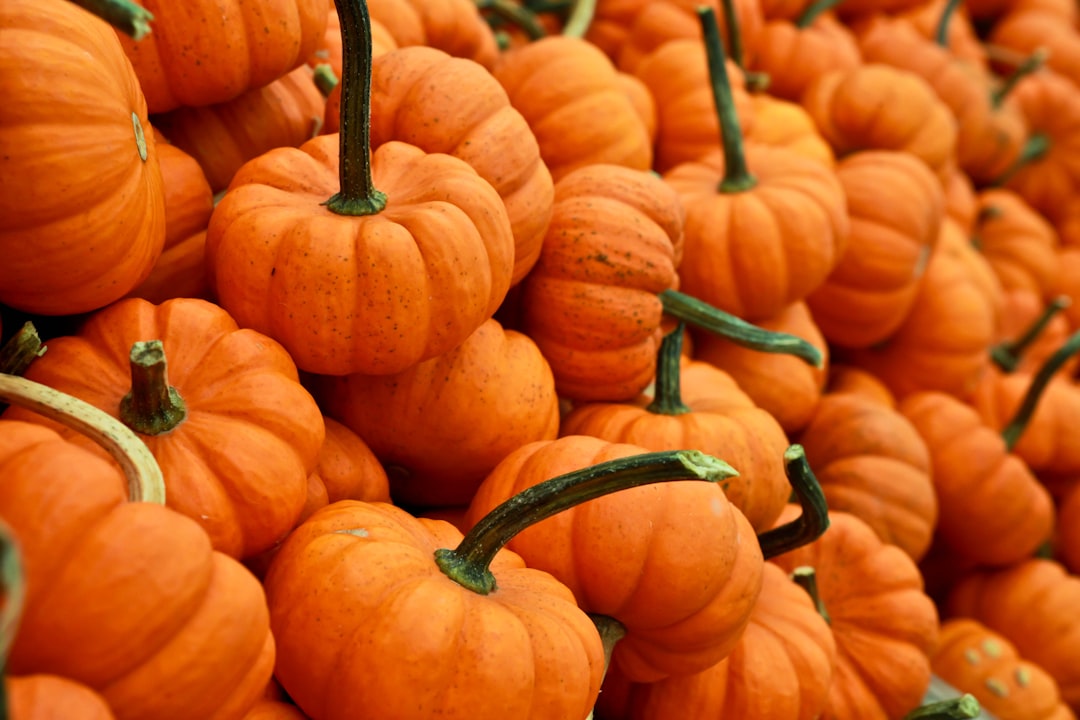
Gardening Tips for Pumpkin: Plant Care
Water occasionally during the early stage and then more heavily after they start growing leaves from their vines. The pumpkins require a vast amount of water. The soil needs to be kept evenly moist, and it is advisable not to use a sprinkler for watering so that you can keep the water off the leaves. To avoid any damage to the fruit, the plant base needs to be watered regularly so that the water reaches the roots only instead of the leaves and the fruit.
Mulching helps keep moist soil cool which reduces disease and insect problems that affect pumpkins especially when planted close together on large beds or rows! Gardener tip: don't plant them near corn because they will cross-pollinate with each other causing some changes in flavor along with different fruit shapes.
Any pumpkin plant would need a garden that is free from weeds. Hand weeding the garden is a must as it would help to reduce the competition for the nutrients. The mulch helps keep those weeds down too!
Gardening Tips for Pumpkins: Harvesting
It takes approximately 120 days before harvest time occurs if grown outside, but the actual time depends on the variety of the seeds.
The vegetables should be harvested when they get full-clored, and the rinds are hard. You should harvest the pumpkins before the first hard frost, and one should never make the mistake of leaving the pumpkins in the garden if the weather has a chance of turning cold.
Cut the pumpkin from its stem with a sharp knife, avoiding as much contact with the vine and surrounding soil.
Enjoying Pumpkins
Pumpkins can be enjoyed or eaten in several ways. It is a delicious gourd, and the best way to enjoy it is in a warm salad. One can also stir-fry the pumpkins with a little bit of chicken and enjoy the dish in the evening. The warm and creamy pumpkin soups are popular among adults and children and form a hearty meal.
Easy Pumpkin Recipe
What would Gardening Tips for Pumpkin be without a great recipe? Pumpkin is a versatile food, and you make a variety of dishes with it. But this Pumpkin Puff Pastry deserves special mention as it easy to prepare and has a fantastic taste. It looks delicious too and seems straight out of a gourmet bakery.

